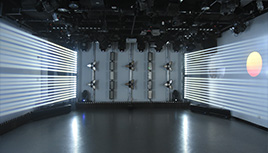How to Handle Emergency Repairs and Spare Parts Procurement for Stage Lighting
2025-03-15 Post By: Longmangroup
As a seasoned procurement manager in the stage lighting industry, one of the most important aspects of ensuring smooth operations during live events is the ability to manage emergency repairs and the procurement of spare parts. Lights are a crucial part of any event, and unexpected issues can arise at any moment. Having effective systems in place for quick repairs and spare parts procurement is critical to minimize downtime and maintain the quality of the performance.1. Building Relationships with Reliable Stage Light Manufacturers and Suppliers
The first step in ensuring that you can handle repairs efficiently is to establish relationships with trusted stage light manufacturers and suppliers. When you purchase from well-established LED stage light factories or stage light manufacturers that offer high-quality products, you are more likely to have access to the necessary spare parts and support services.
- Example: Purchasing lights from reputable brands like Chauvet, ETC, or Martin ensures that parts and technical support are readily available. These manufacturers often offer comprehensive warranties and reliable after-sales services.
2. Create an Inventory of Essential Spare Parts
One of the most proactive approaches to handling emergencies is to maintain an inventory of the most commonly needed spare parts. This will ensure that repairs can be done quickly, without having to wait for a new part to be shipped. The exact parts to keep in stock will depend on the type of lighting you use most frequently, but here are some examples of parts you should consider:
- Moving Head Lights: Bulbs, motors, gobo wheels, circuit boards, fans.
- LED Fixtures: Power supplies, LED modules, control boards.
- Profile Lights: Lenses, shutters, lamp holders.
- Pixel Bar Lights: LED chips, power adapters, DMX controllers.
Tip: Consider the frequency of failure and the cost-effectiveness of stocking certain parts. If a specific part has a high failure rate (e.g., cooling fans in moving heads), it may make sense to keep multiples in stock.
3. Establish Emergency Protocols
Having a clear emergency protocol for dealing with equipment failures is crucial for maintaining smooth operations. The protocol should include steps for troubleshooting, contacting the appropriate technician, and sourcing replacement parts quickly.
- Step 1: Initial Troubleshooting: Empower your technical team with basic troubleshooting guides for common issues, such as power failures, DMX communication problems, or faulty connections.
- Step 2: Identify the Fault: If troubleshooting does not solve the issue, identify whether the problem is due to a faulty component or software issue.
- Step 3: Contact Manufacturer/Distributor: If repairs cannot be done on-site, contact the manufacturer or authorized distributor to request a replacement part. A dedicated after-sales support team is essential during these times.
- Step 4: Quick Delivery: If a replacement part is needed urgently, ensure you have a fast shipping solution in place, such as express delivery services.
4. Implement Preventative Maintenance Programs
Another important aspect of minimizing emergency repairs is to implement preventative maintenance for your lighting equipment. Regular maintenance checks can identify potential issues before they lead to equipment failure. This may include checking the fans, wiring, bulbs, and cooling systems for signs of wear and tear.
- Example: Schedule quarterly or semi-annual inspections where technicians go through all equipment, checking for signs of damage or malfunction. For moving head lights, ensure that the motors and gears are lubricated, and for LED lights, make sure the cooling systems are functioning optimally.
5. Supplier Evaluation and Competitor Comparison
When it comes to spare parts procurement, evaluating suppliers is key. You need to compare lead times, costs, and quality of parts. While cost-effectiveness is important, sometimes a cheaper part might not be as reliable or durable as a higher-quality one, which could result in more frequent breakdowns.
- Example: If you purchase spare parts from a local LED stage light factory or stage light manufacturer that is known for fast delivery, you might pay slightly more, but the time saved during an emergency could justify the cost. On the other hand, ordering parts from an overseas supplier might lead to delays.
6. Training and Support for On-Site Technicians
Ensure that your on-site team is well-trained to perform emergency repairs and use spare parts effectively. Regular training sessions should be organized, focusing on common lighting issues and how to troubleshoot or replace parts quickly.
- Example: Training your team to replace a moving head motor or LED module on-site can save a lot of time during an event. Offering a workshop where technicians learn how to handle these repairs efficiently is valuable.
7. Vendor Support and Warranty Services
Always ensure that your manufacturers or suppliers offer clear warranty terms and after-sales support. In the event of a failure, a warranty can significantly reduce the cost and hassle of repairs. For example, LED stage light factories often offer warranties ranging from 1-5 years, depending on the type of product. This warranty should cover both labor and parts, but it’s important to check the specifics, such as whether it covers accidental damage or user-induced issues.
Tip: Keep all warranty documentation organized and ensure that you know the exact terms before needing to make a claim. Regularly review your warranty policies with your suppliers to stay updated on any changes.
Conclusion
Effectively managing emergency repairs and spare parts procurement for stage lighting requires thorough planning, strong supplier relationships, and a proactive approach to equipment maintenance. By maintaining a stock of critical spare parts, creating emergency protocols, and ensuring your team is trained and supported, you can minimize downtime and maintain the seamless operation of lighting during live events. By evaluating cost, quality, and response times of suppliers, as well as investing in preventative maintenance, you can ensure that your equipment continues to deliver optimal performance, event after event.














